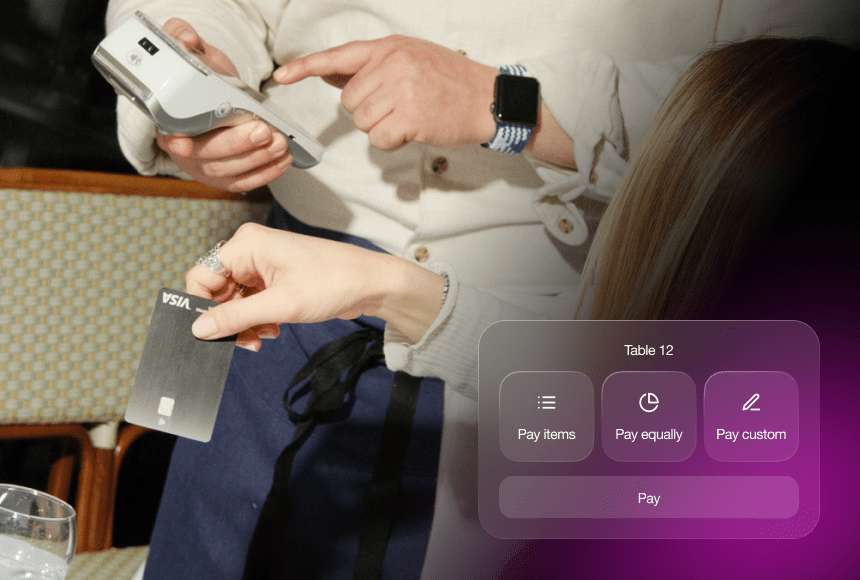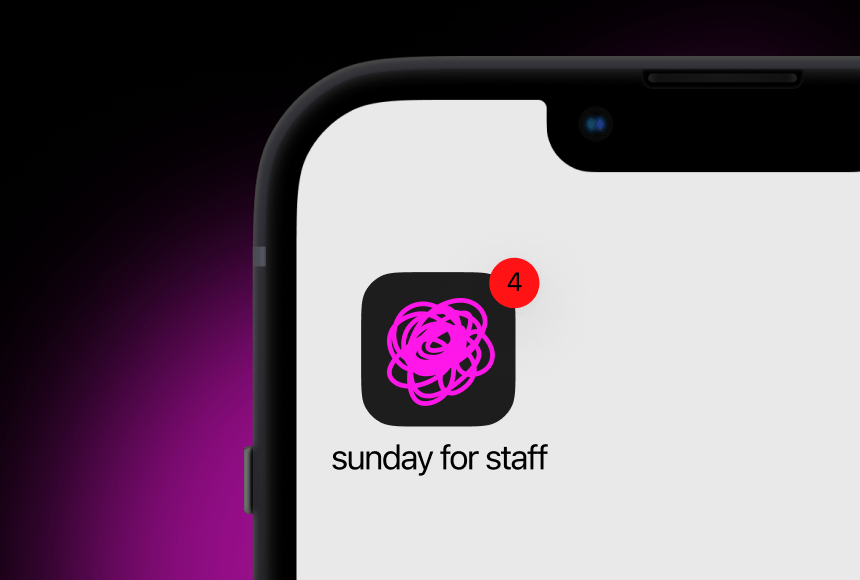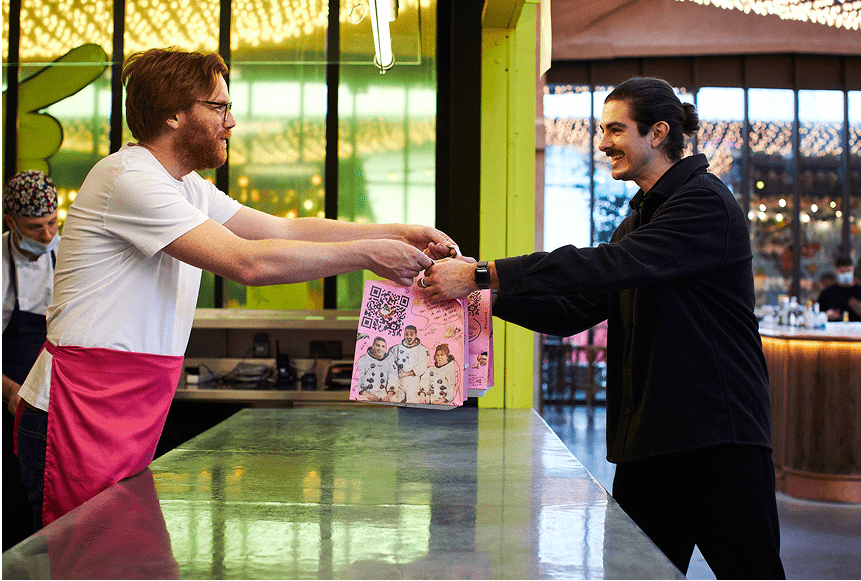
Streamlining the End of the Meal: Practical Steps to Keep Diners Happy
Understanding the Dilemma: Why Diners Dislike Waiting
Picture this: You’ve provided exceptional service, dazzled your guests with a memorable dish, and received glowing feedback throughout their meal. Then comes that final hurdle—settling the bill. Suddenly, the experience stalls. Diners sit there, glancing around for a member of staff, feeling the post-meal lull turning into impatience.
Waiting for the bill is one of the most common frustrations guests cite when dining out, and this minor snag can overshadow an otherwise superb experience. A well-known study by Big Hospitality (https://www.bighospitality.co.uk/) reported that many UK consumers rank slow bill payment among their top complaints about restaurant visits. Why does something as small as the time it takes to pay create such strong feelings?
Diners tend to plan how they spend their evening or lunch break. Once they’ve finished their meal, they’re ready to either continue socialising elsewhere or get back to their business. If they can’t leave promptly, they feel inconvenienced. They might watch as your busy staff juggle multiple tables, and that positive glow they had can fade quickly if they’re left waiting too long. The final ten minutes can have an outsized impact on a guest’s impression—great service right until the end is crucial.
The Ripple Effect on Your Business
If waiting for the bill consistently frustrates your diners, the consequences for your restaurant can be more serious than you think:
- Negative Word of Mouth: People share poor experiences more often than good ones. A lovely meal can be forgotten if the last interaction leaves a sour taste. Guests might tell friends, family, or even post negative reviews online.
- Reduced Table Turnover: Slow payment extends the total time each table is occupied, limiting the number of potential covers per service. This can lead to fewer overall sales on peak nights and longer queues for new customers.
- Staff Efficiency Problems: The longer it takes for staff to manage payments manually or retrieve card machines from a single station, the more staff hours are tied up instead of focusing on service or upselling dessert and drinks.
- Lost Opportunities for Upselling: When guests feel hurried or irritated, you lose the chance to offer them that last glass of wine or a final cappuccino. The window for sealing an additional sale snaps shut if they’re too focused on leaving.
- Fewer Return Visits: Diners who have a frustrating check-out experience may switch to a competitor next time.
How the Traditional Bill Payment Process Slows Everything Down
Let’s walk through the typical billing sequence in a restaurant without any specific technology improvements:
- The diner asks for the bill from a passing server.
- The server walks to the POS system (or a central processing area) to print the bill.
- They deliver the paper bill to the table.
- The diners check the charges, then wait for the server to return so they can pay with a card machine.
- Once the server arrives again, they present the card reader.
- If the diner wants to leave a tip, they have to confirm it on the device or add it in cash.
- The payment completes, and the server prints the receipt.
This dance might not sound too laborious, but small delays add up—particularly if staff are busy and customers can’t easily wave someone down. Multiply those extra minutes by the number of tables in your dining room, and you start to see how it can cause backups.
The Psychological Shift: Time Poverty and Guest Satisfaction
In the UK, people are often juggling busy schedules. Lunch breaks can be tight, weekend dining should feel seamless, and nobody wants to spend precious moments stuck in limbo. This modern sense of “time poverty” means that when a restaurant doesn’t optimise the payment experience, it stands out as a glaring inefficiency.
Moreover, we’re living in an era that values convenience—one-click shopping, contactless transactions, and online food delivery. Diners expect the same frictionless approach at the dining table. When that final step (getting the bill) is at odds with everything else in their quick-and-easy lifestyle, the dissonance can provoke frustration, even if the meal was otherwise fantastic.
Embracing New Technology: A Faster, Friendlier Payment Journey
Restaurants across the UK are increasingly recognising the negative consequences of slow billing. One popular solution is adopting digital payment methods. Instead of a drawn-out back and forth, guests scan a QR code (or similar) at their table to see their bill, tip staff, and complete payment immediately—even split the bill without hassle.
For instance, solutions like sunday integrate seamlessly with many restaurant workflows. They let diners access and pay their bill with minimal fuss. The advantages go beyond speed:
- Fewer Errors: Automated systems reduce the chance of incorrect totals or wrong calculations when splitting accounts.
- Improved Tipping Rates: Digital payment prompts often encourage diners to leave a gratuity, as they’re presented with helpful preset tip options.
- Convenient Customer Feedback: Guests can leave instant comments or reviews without needing to search for places to do so afterward.
- Better Staff Utilisation: Your servers can concentrate on hosting, upselling, and ensuring your diners have the best experience throughout the meal, instead of running back and forth checking receipts.
A survey by McKinsey (https://www.mckinsey.com/) highlights that consumer demand for contactless, app-based, or QR code transactions has risen dramatically in recent years. Restaurants that adapt to these methods meet the evolving expectations of guests who are increasingly comfortable completing transactions on their phone.
Case Study: A Busy London Bistro
Let’s illustrate how streamlined bill payment transforms a restaurant’s daily operations. Consider a fictitious London bistro, “Harper’s Table,” located near a bustling business district. During the lunch rush, weekday diners have limited time before heading back to the office or traveling to their next meeting.
Before adopting a digital payment solution, the staff frequently witnessed diners growing impatient. Servers struggled to keep up—printing, delivering, and collecting payments. Long waits for the bill prompted some guests to skip dessert or coffee, missing revenue boosters. A few guests even clicked their tongues or shot annoyed glances while scanning the restaurant for the elusive card reader.
After introducing a QR code payment system:
- Speed of Service: Diners finish, scan, and pay within minutes. No more hovering or waiting for staff to return with a paper bill.
- Higher Average Spend: Freed from the stress of waiting, diners feel more relaxed. Staff can quickly pitch that stirring dessert special, adding to the final cheque total.
- Bigger Tips: The tipping prompt on the payment screen increased gratuity percentages. Staff morale also went up.
- Better Reviews: Some customers left impromptu positive reviews, praising the “no-wait bill” feature. This heightened the bistro’s visibility online.
In just a few weeks, Harper’s Table reported higher table turnover at lunch, happier diners in the evenings, and an overall boost in revenue. Time saved allowed the staff to focus on vital service elements, like chatting with regulars or meticulously plating dishes. Meanwhile, customers left with a positive, effortless impression—making them more likely to return.
Steps to Avoid Prolonged Bill Wait Times
1. Train Your Team in Time Management
Staff training is the first step toward a seamless payment process. Make sure employees:
- Anticipate the Bill Request: Encourage them to ask if diners are ready for the bill when clearing plates or checking on tables, rather than waiting for a guest’s hand-raise or call.
- Share Payment Tools: Provide multiple card readers or tablets if your technology allows. Ensuring each section has at least one device can dramatically cut waiting periods.
- Offer Clear Explanations: If you have introduced a QR code or digital payment system, staff should be able to guide less tech-savvy guests gently through the process.
- Keep It Courteous: A polite statement such as, “Please feel free to settle up whenever you’re comfortable,” invites a calm, relaxed atmosphere.
2. Deploy an Efficient POS Setup
Having an up-to-date point-of-sale system is more than a matter of convenience; it’s a backbone of efficient service. If your current POS is slow to respond or prone to glitches, you might inadvertently extend transaction times. Look for:
- Seamless integration with mobile or tablet devices.
- Real-time updates so staff always have the current menu and pricing details at hand.
- User-friendly interfaces your team can quickly navigate to finalise bills without errors.
3. Adopt Digital Payment Solutions to Empower Your Diners
Giving customers the power to pay on their own time is the surest way to avoid that dreaded lull at the end of a meal. Digital payment solutions, often triggered by scanning a QR code pointing to an online invoice, offer:
- Immediate Access: The final tab is available on their phone the moment they’re ready to pay.
- Flexible Split-Bill Options: No more awkward “We need this portion on card, that portion in cash” scenarios. Guests can self-manage partial payments or equal splits smoothly.
- Optional Extras: Tipping can be selected with a simple click, and diners might even complete a short satisfaction survey or leave a review.
Systems like sunday support easy adoption, requiring minimal staff intervention. In the UK market, digital payments are already widespread, so your customers will likely embrace this modern approach.
4. Organise Table Management and Staff Rotations
Consider your restaurant layout and staff assignments. If too many tables rely on a single server or if the layout places them too far from their section’s POS or payment station, bill delivery slows down. Simple modifications can help:
- Balanced Sections: Divide the floor so each server has a manageable number of tables at a time.
- Dedicated “Cash Out” Area: If you still rely on some manual processes, set aside a space near the dining floor for staff to print the bill or fetch a card reader swiftly.
- Cross-Training: Train all floor staff to handle payments, so no single team member becomes a bottleneck.
5. Leverage Metrics and Customer Feedback
Tracking how long it takes to clear tables at peak times can reveal hidden inefficiencies. You can also gather direct customer feedback:
- Short Surveys: If using a digital payment method, embed a quick question like “How was your payment experience today?”
- Staff Debriefs: Encourage employees to share moments where payment got jammed. Maybe the card reader malfunctioned, or a table didn’t know they could pay by scanning a code.
- Performance Metrics: Keep an eye on average table turnover time. If it decreases over a few months of implementing improvements, you know you’re on the right track.
Common Pitfalls When Introducing Faster Payments
While speeding up the end of a meal is unquestionably beneficial, a few pitfalls can crop up if not managed properly:
- Poor Staff Training: Staff might resist new technology or feel overwhelmed without thorough guidance.
- Overly Pushy Upselling: Attempting to sell more at the final step can feel abrupt if not done politely.
- Inadequate Tech Support: Relying on new solutions without reliable Wi-Fi or device troubleshooting can lead to chaos if something goes wrong mid-service.
Beyond the Bill: Turning the Payment Step into a Value-Add
Faster payment processes aren’t just about slashing wait times; they also present a golden opportunity to enhance the customer journey. Instead of viewing the end of the meal as an afterthought, you can turn it into a meaningful, and even enjoyable, moment:
- Offer a Personalised Farewell: Train staff to deliver a quick “Thank you, we enjoyed having you here,” just before guests pay (or right after). A short but heartfelt acknowledgment ensures they leave on a high note.
- Collect Feedback for Future Improvements: If you use a digital solution, ask one or two short, optional questions: “What was your favourite dish?” or “How can we make your next visit even better?”
- Encourage Return Visits: Provide a small incentive for a subsequent booking, such as a discount code, loyalty points, or a free coffee on the next visit. This can be automatically shared after payment.
When diners sense you care about their overall satisfaction—not just their payment—they’ll walk out the door with a warm feeling about your establishment. Those final two minutes are a chance to leave a lasting impression, capitalising on the positive sentiment you’ve built.
A Glimpse at Estimated Time Savings
You might wonder: “How exactly does this translate into measurable gains?” Below is a simplified example showing how a seamless digital payment solution can shave off minutes at each step compared to a traditional process.
| Stage | Traditional Payment | Digital (QR Code) Payment |
|---|---|---|
| Bill Request | 1 min for server to acknowledge + walk | Guest scans code instantly |
| Bill Delivery | Another 1–3 min to print & deliver | No printed bill required, bill is on phone |
| Payment & Tips | 2–5 min with card machine wait & tip entry | Instant digital prompt, tip with a few clicks |
| Total End-of-Meal Wait | 4–9 min (potentially longer in busy times) | Less than 1–2 min in most cases |
Over a lunch or dinner service, shaving even five minutes per table can dramatically increase your capacity to seat more guests or keep the flow steady. Let’s not forget that a satisfied customer is more likely to linger for dessert or an after-dinner coffee—if the rest of the process is already arranged to be quick and efficient.
Nurturing a Culture of Hospitality
Ultimately, no new technology or streamlined approach will be successful if your team doesn’t embody the spirit of hospitality. People go out to eat for an experience—one that includes human interaction and a welcoming atmosphere. Speeding up the payment doesn’t mean rushing the guests; it simply means removing friction from the final stage.
If you show empathy for a diner’s time, they’ll feel valued. By adopting new payment methods, refining staff training, and rethinking table management, you ensure a smooth end to that experience, leaving guests with a sense of well-being.
Where Do You Go from Here?
If your restaurant sees the same handful of bottlenecks when it comes to payment, taking proactive steps can reverse these negative trends. Examining each component—from staff readiness to POS systems to user-friendly technology—offers a comprehensive path toward improvement.
Each small fix adds up to happier guests and a more profitable business. So if you’re aiming to delight diners, reduce staff stress, and encourage repeat visits, focus on delivering a swift and pleasant payment experience. That moment—far from being an afterthought—might just be the factor that cements your reputation in the local culinary scene.
Frequently Asked Questions (FAQ)
What if some customers prefer traditional payment methods?
It’s helpful to provide different options. Digital solutions make life easier for a large majority, but carrying a card reader or having a dedicated payment terminal on-hand ensures that those who prefer a more familiar approach aren’t alienated.
Does implementing a QR code system require costly equipment?
In most cases, you can generate and print QR codes to place on tables at minimal cost. Your existing POS or an affordable software add-on can integrate the digital payment function. The key expense is generally the monthly or transaction-based fee from the service provider, but many restaurants quickly recoup these costs through improved efficiency, bigger tips, and shorter table turnover times.
Will staff lose out on tips if everything goes digital?
On the contrary, digitising the process can boost tipping. Many solutions automatically present guests with tip suggestions, which simplifies the decision. Diners don’t need to handle loose change, and the ease of tapping a percentage often encourages generosity.
How can my restaurant manage security with digital payments?
Reputable digital payment platforms use strong encryption and established payment gateways. As best practice, keep your restaurant’s Wi-Fi secure with a unique password, ensure software updates are installed promptly, and work only with well-reviewed service providers that prioritise data protection.
Should I promote this new payment feature to guests?
Absolutely. A short table card or a brief mention from your staff can help educate diners that they’re free to settle up whenever they wish. Make it a friendly choice rather than a pushy sales pitch.
Will faster payments make customers feel rushed?
Faster, more convenient payment doesn’t equate to rushing diners out. Instead, it hands diners full control to decide exactly when to pay. This approach can actually encourage them to linger, order extras, and feel at ease, knowing they won’t have to hunt down a member of staff once they’re ready to go.
Find out more today
Drop us your details below and we’ll reach out within the next 24
“Bill please” is a thing of the past.
With our integrated QR codes your customers pay in seconds, straight from their table.




